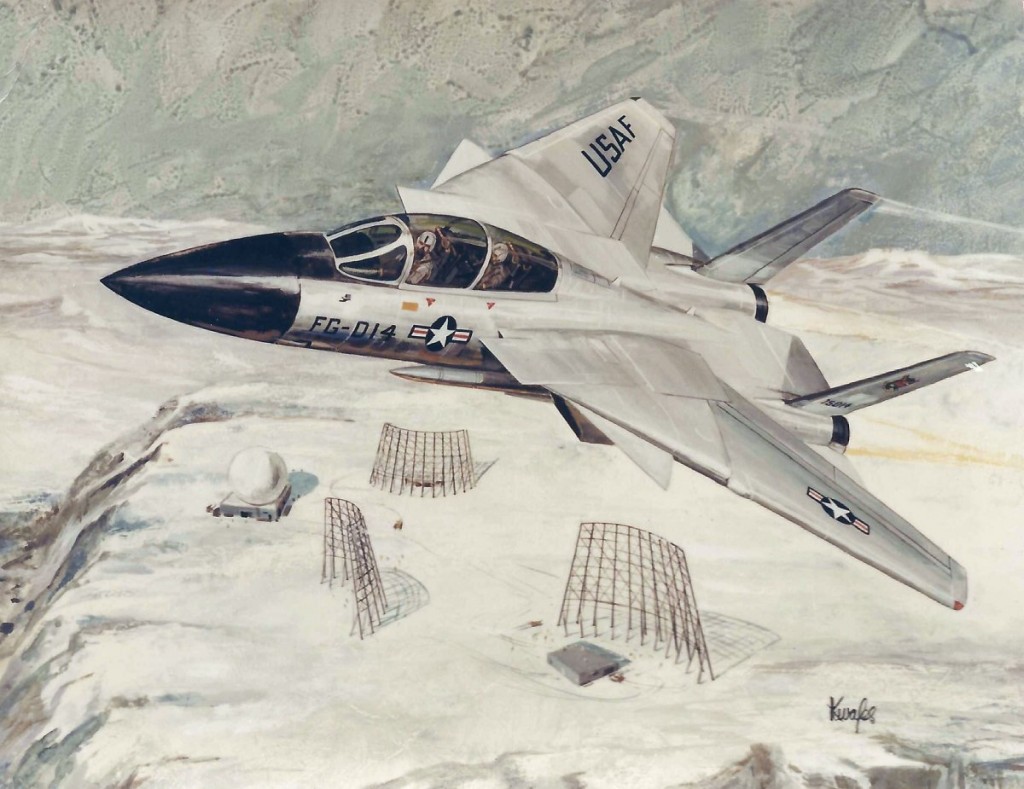A piece of artwork, presumably from Grumman (it came from a photo album full of Grumman artwork), depicting an F-14 in USAF colors. Shown flying over ballistic missile warning radar facilities Way Up North. It appears to be a pretty stock F-14… seems equipped with an M-61 and an AIM-54.
I’ve been hearing about this problem for a while now.
Bananas are something of a miracle of horticulture and human tinkering with what evolution done wrought. In their natural state, bananas are rather icky-looking squat things that require some considerable effort to make edible, but when most people think “banana” they think of the Cavendish banana, which first appeared on the scene in 1836 in the form of a single mutant plant. This was yellow and tasty and could be eaten right out of the peel. It was, in essence, pretty awesome. But there’s a problem: all modern Cavendish bananas derive from that *single* plant. Which means they’re all pretty much clones. Which means they would, in theory, be capable of being wiped out by a single plague… if one plant is susceptible to it, they all would be.
Good news, everyone!
Get ready for the banana pandemic to destroy your favorite fruit
Bananas have been struck by plagues before. Another strain, the “Gros Michel” type, was the standard-banana until the 1950’s. At that point, the strain was virtually wiped out by the “Panama disease.” It didn’t make the strain extinct, but it made it rare enough to cease to be economically meaningful, and was replaced – after considerable effort and expense – by the Cavendish. Until relatively recently the Cavendish was thought immune to the Panama disease. Guess what.
Related: here’s a mutant fruit.
Here’s what this type of mutant fruit actually believes happened: dinosaurs with sharp flesh-rending fangs were actually vegetarians who lived less than 6,000 years ago and ate fruit that only appeared less than 200 years ago:
Think I’m kidding? Prepare to be disappointed.
At last:
[youtube zsl_auoGuy4]
Here’s an important ponderable: what does neutronium look like? Further, what does intensely hot neutronium look like?
As to the former, my guess is that it would look like a very reflective mirror. Photons would seem likely to simply bounce off. But for reasons that don’t bear going into, I was thinking about extremely hot neutronium, such as might be found in a recently created neutron star. Hot materials, such as molten iron, emit light via incandescence: as energetic electrons drop into lower energy levels, the difference in energy is spat out in the form of a photon. But what would be the mechanism for a neutron to emit a photon? Or… can a lump of neutronium even be said to actually have a temperature in the first place? High-energy neutrons are often encountered, but in the form of free-flying individuals, with energy measured as a result of velocity. But locked into a stable high-pressure, high density neutron fluid would seem to negate velocity.
So, with no electrons to go up or down in energy states, there would seem to be limited means to emit photons. If that’s correct, neutronium fresh out of the supernova factory might be at billions of degrees, but it would look just like neutronium that had somehow been cooled to cryogenic temperatures.
Additionally: if this is correct, a billion-degree lump of neutronium doesn’t seem to have a heat rejection mechanism. A billion years down the line, it’ll be just as hot as today.
So… what am I missing/
Note: unless some sort of technomagical incredibly strong force field is developed, there will probably never be a lump of neutronium of less than stellar mass. Without the neutron stars monumental gravity keeping the neutronium compressed, it’ll simply explode.
Normally CGI reconstructions of historic events… meh. But this is actually pretty spiffy: NASA took photos and audio tape from Apollo 8 and lunar map data from the Lunar Recon Orbiter to reconstruct the famous Earthrise.
[youtube dE-vOscpiNc]
From “From the Earth to the Moon.” Note that the dialogue is reasonably close, for Hollywood, but not exactly as recorded.
[youtube JlV2YtCUnpg]
BOOOOOOO……..
[youtube kcROVqmF9SY]





